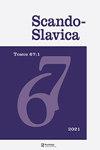Strategic Uses of Nationalism and Ethnic Conflict: Interest and Identity in Russia and the Post-Soviet Space
IF 0.2
0 HUMANITIES, MULTIDISCIPLINARY
引用次数: 0
Abstract
was the result of central planning, which aimed at centrally organized construction with as little variation between different areas as possible. What planners could not anticipate, however, was the considerable number of side-effects that their planning would lead to. Although planners could foresee much of the construction and control the number of houses, as well as decide who would live there, they could not control the ways in which the spaces they created would be used. Stairwells provide one of the six interesting cases of Soviet materiality analysed by Golubev. The first chapter focuses on the linguistic side of late socialism, a natural starting point for this work as it was productivist language that produced and reproduced much of Soviet elemental materialism. The language emphasized the technological superiority of the Soviet Union, connecting the bright Soviet future with different technological objects. It was Soviet superiority in technology that would guarantee the country a leading position vis-à-vis the West, but also provide Soviet society with widespread well-being. In a way, Soviet techno-utopianism was meant to transform the Soviet material world. Yet, as Golubev argues, it also provided numerous forms of self-expression. Overall, Golubev’s account of Soviet materiality is a welcome addition to scholarship on the late socialist era. While the Soviet Union is a long-gone ideologicalpolitical construction, its material side is still very much present in the daily life of people throughout the former Soviet territory. This further underlines the significance of Golubev’s study. It gives a voice to groups of people who often lacked an official voice. It is often the case in historical studies, especially with a politicized system like the Soviet Union’s, that the experiences of ordinary people are difficult to gather. In this, Golubev’s does a marvellous job, and a great service to Soviet studies more generally.民族主义与种族冲突的战略运用:俄罗斯与后苏联空间的利益与认同
本文章由计算机程序翻译,如有差异,请以英文原文为准。
求助全文
约1分钟内获得全文
求助全文

 求助内容:
求助内容: 应助结果提醒方式:
应助结果提醒方式:


